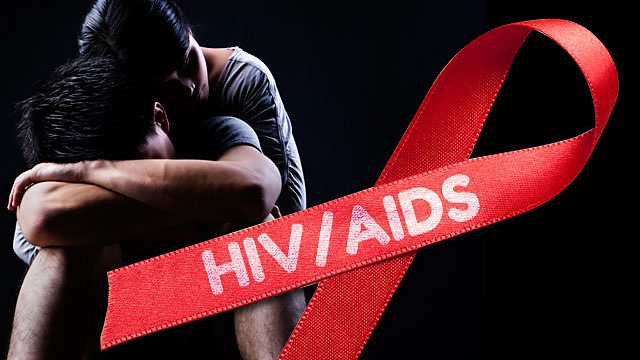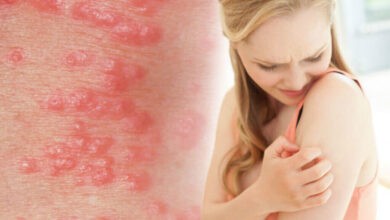HIV/AIDS

Acquired immune deficiency syndrome is a fatal illness caused by a retrovirus known as the human immune deficiency virus (HIV) which breaks down the body’s immune system that leads to victims vulnerable to infection. It is the end-stage of HIV infection. A number of opportunistic infections (TB, candidacies, cryptococcal meningitis, etc.) commonly occur at this stage and/ or cancer (Kaposi’s sarcoma)
HIV is spread primarily by unprotected sex (including anal or oral sex), contaminated blood transfusion hypodermic needles, and from mother to child during pregnancy, delivery, or breastfeeding. Somebody fluids such as saliva, tears, do not transmit HIV. Methods of prevention include safe sex, needle exchange program, treating those who are infected and male circumcision.
HIV/AIDS has a great impact on society, both as an illness and a source of discrimination. The disease also has a large impact. There are many misconceptions about HIV/AIDS such as the belief that causal non-sexual contact. The disease has become the subject of much controversy involving religion, not supporting condom use as prevention. It has attracted internal medical and political attention as well as large-scale funding since it was identified in the 1980s.
World statistics
- It is a global epidemic <70 million people have been infected with HIV and 35 million died.
- PLHIV (people living with HIV) – 36.7 million worldwide (2016)s
- Mortality – 1 million worldwide (2016)
- 150 million people tested in 2014
- World prevelance – 0.8%
- SEARO prevalence – 0.3%
- Africa, prevelance – 4.3% (1 in every 25 adults)
- Bangladesh, prevalence – 0.1%
- 1st case in Bangladesh – 1987
- Nepal prevalence– 1.6%
- 1st case in Nepal– 1998
Epidemiology
Agent factors
Agent:- Human immune-deficiency virus, encapsulated double-stranded RNA virus. The Virus has the ability to destroy human T4 helper cells. Able to spread throughout the body. It can mutate rapidly. The virus is easily killed by heat.
The reservoir of infection: case and carrier
Source of infection: in blood, semen, and CSF (Cerebro-spinal fluid), lower concentration in tears, saliva, breast milk, urine, cervical and vaginal secretions- virus also isolated in brain tissue, lymph node, bone marrow, and skin.
Host factors
Age: 20-49 years
Sex: varies in different areas
High-risk group
- Iv (intravenous) drug user
- Transfusion recipients of blood and blood products
- Sex workers
- Homosexual, bisexual and heterosexual
- Multiple sex partners
- Hemophiliacs
- Clients of STD
Mode of transmission
- Sexual transmission
- Blood contact- whole blood cells, platelets
- Contaminated needle, syringe or any skin piercing, tattooing, acupuncture or scarification)
- Maternal- fetal transmission: mother to child transmission through the placenta, during delivery or by breastfeeding
Incubation Period
Uncertain (few months to 10 years, even more)
Clinical Manifestation
Classified into 4 broad categories
Initial infection with the virus and development of antibodies
- Fever, sore throat and rash-few weeks after initial infection
- Once infected, people are infected for life
- HIV antibody usually appears in the blood between 2 to 12 weeks (window period)
Asymptomatic carrier state
Infected people have antibodies related to many signs, but no overt signs of disease, except persistent generalized lymphadenopathy
Due to damage to the immune system, but without opportunistic infections and cancers associated with AIDS, they may present with one or more of the following features
- Unexplained diarrhea lasting longer than a month
- Fatigue
- Malaise
- Loss of >10% body weight
- Fever
- Night sweats
- Other milder opportunistic infections such as oral thrush
- Generalized lymphadenopathy or an enlarged spleen
Patients from high-risk groups with two or more manifestations (Including generalized lymphadenopathy) and decrease T-helper lymphocytes are considered to have an ARC (CD4 cell)
Diagnosis of AIDS
For AIDS Surveillance an adult or adolescent (>12 years of age) is considered to have AIDS If at least 2 of the following major signs are present in the combination with at least 1 minor sign.
Major signs
- Weight loss greater or equal to 10% of body weight
- Chronic diarrhea for >1 month
- Prolong fever for >1 month (Intermittent or constant)
Minor signs
- Persistent cough for >1 month
- Generalized prutitic dermatitis
- History of Herpes Zoster
- Oropharyngeal candidasis
- Chronic progressive or disseminated herpes simplex infection
- Generalized lymphadenopathy
The presence of either Kaposi sarcoma or cryptococcal meningitis is sufficient for the diagnosis of AIDS for surveillance purposes.
Laboratory Diagnosis
- ELISA- detection of HIV antibody
- Western blot-highly specific, specific Ab to viral core protein (p24) and envelop glycoprotein (gp41)
- Virus isolation
- Strip test
Control
- Mass media should be involved in educating the people on AIDs, it’s nature, transmission and prevention
- Safe sex practice by use of condom and avoiding indiscriminate sex
- Avoid use of shaved razor, tooth brush, needle, syringe etc
- Avoid pregnancy of HIV positive mother
- Perinatal care of pregnant women-routine HIV testing
- Avoid of pregnancy by HIV positive mother ARV therapy during pregnancy. Avoidance of breast feeding
Combination HIV prevention
Combination prevention programs use a mix of biomedical, behavioral, and structural interventions to have the greatest possible impact on reducing new infection.
Prevention of blood-borne HIV transmission
Proper screening of blood, blood product and screening before organ transplant and use of a sterile needle, syringe, etc.
- Zidovudin
- Lamivudin
- Tenofovir
- Nevirapine
Start ART when cCD4 cell is less than 500 cells/mm3 one who start ART should continue lifelong
Specific prophylaxis
The Main aim to treat the manifestation of AIDS
Primary health care service
Because of its wide-ranging health implications, AIDS touches all aspects of PHC, including MCHFP and education.
Post exposure Prophylaxis (PEP)
- Consists of comprehensive set of services
- First aid care
- Counseling and risk assessment
- HIV testing and counseling
- Short term (28 days) provision of ART, with support and follow up.
Prevention of mother-to-child transmission (PMTCT) of HIV
The human immune virus can be transmitted from an HIV – Positive mother to her child
- During pregnancy
- Childbirth
- And Breast feeding
Mother-0to-child transmission (MTCT), which is also known as ‘vertical transmission, account for the vast majority of infections in children (0-14 years)
Around 1.4 million HIV infections among children were prevented between 2010 and 2018 due to the implementation of PMTCT services.
In 2017, 80% of pregnant women living with HIV (human Immuno virus) were receiving ART, a significant increase from 2010 levels when only 51% had access.
WHO recommends, that mothers living with HIV who are on treatment are being fully supported to adhere to it and even when ARV drugs are not immediately available should exclusively breastfeed their infants for the first six months of life, then introduce approximate complementary foods while continuing to breastfeed for at least 12 months and up to 24 months or longer (similar to the general population).
Misconception about HIV/AIDS
- HIV is a death sentence
- HIV can be transferred by kissing
- You can’t get HIV from oral sex
- You can tell by looking if someone has AIDS
- HIV is same as AIDS
- People who have HIV cannot have sex with people who don’t have HIV
- If I am HIV positive I shouldn’t start treatment until I get very sick is one of the major misconception




